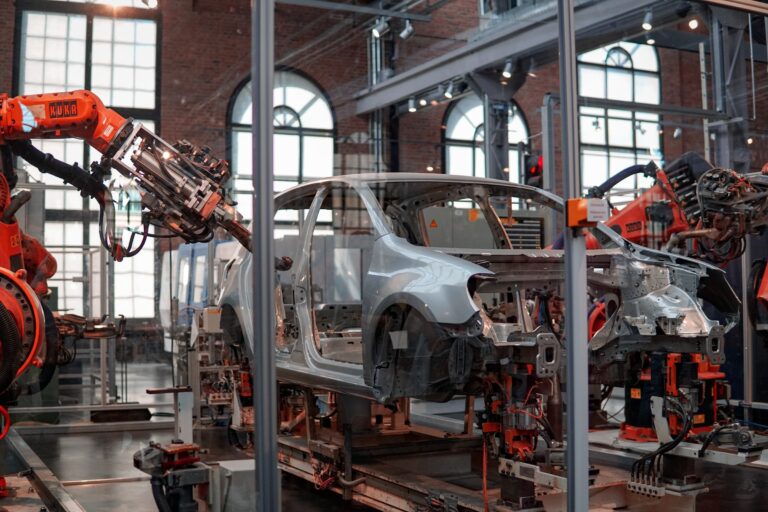As scientific progress advances in the fields of machine learning, robot dexterity and processing power, it becomes increasingly feasible for machines to replace humans in a broad range of jobs traditionally requiring human labour. This has led to calls for interventions to regulate the automation of jobs and resultant displacement of workers. One of the measures proposed is an automation tax, also commonly known as a “robot tax”.
In this blog post, I lay out the case for an automation tax, and when and how it might be implemented. I urge caution against adopting an automation tax as a permanent solution in addressing the social costs caused by replacement of human labour by automation and suggest that an automation tax may be implemented through a system of “negative depreciation”.
Why an automation tax?
An automation tax could address three main problems caused by the automation of jobs.
The first problem is declining tax revenues. Tax systems are generally designed to collect a significant amount of revenue from employment, such as personal income taxes, payroll taxes, national insurance contributions or other wage-based taxes. Tax systems also generally incentivise investments in machinery and other forms of capital, by offering tax benefits for these expenditures. The net result is that tax revenues are likely to decline if workers are laid off and replaced with machines.
The second problem is the inequitable distribution of gains and losses from automation. While automation may result in productivity gains, there remains an important question on how such gains and losses are distributed amongst members of society and whether such distribution is equitable. Absent regulatory intervention, automation benefits are likely to disproportionately accrue to businesses, with the disadvantages disproportionately falling on workers displaced by such technologies. This creates an impetus for regulatory intervention to try to achieve a more equitable distribution of the benefits of automation.
A third problem is the social costs of job displacement, such as social support and retraining programmes for displaced workers. The key concern is one of structural unemployment. Workers will likely have to train and pick up new skills for re-employment, requiring them to invest a significant period of time in training. Social support will be required in the meantime. The extent of social costs depends on the pace and scale of the displacement of workers. The faster the displacement occurs and the more workers are displaced, the more difficult it is for the displaced workers to retrain and find new jobs. Consequently, the strain on social support systems and resultant social costs will be greater.
Not all jobs face the same risk of being replaced through automation. Some jobs are more susceptible, with unskilled or semi-skilled manufacturing, the operation of vehicles and machinery, and stocktaking, being some examples of jobs that are at risk of at least partial automation in the near future. When the relevant technology becomes capable of automating such jobs, it is likely that automation will occur at a very rapid pace and at a massive scale, resulting in considerable social costs.
An automation tax should be a temporary solution, not a permanent one
While it is economically unfeasible to resist automation in the long run, whether through an automation tax or otherwise, the pace and scale of the displacement of workers through automation should be controlled, since the sudden displacement of a large number of workers can result in very severe social costs.
Thus, I argue that an automation tax should be considered only as a temporary regulatory measure to control the pace at which job displacement through automation occurs, but not for any other reason. It can incentivise businesses to delay their adoption of automation technologies, freeing up social support systems and granting workers enough time to retrain and find new jobs.
Caution should be exercised when adopting this measure, given the likelihood of considerable political pressure exerted by workers to attempt to keep the automation tax as a permanent feature, since displacement and retraining is a painful process. A country which succumbs to such pressure puts its long-term international competitiveness at risk, possibly resulting in even greater economic harm.
In the highly-interconnected modern world, it is not feasible for a country to stifle innovation and protect its citizens through permanent automation taxes. The rest of the world would simply proceed with automation and undermine the efforts of that country. This is known as the problem of “leakage”, where controls of a negative activity or good in one country are rendered ineffective because the activity or goods simply move to another country and continue to affect the first country.
What should be taxed?
The next issue is how to identify what should be taxed in order to achieve this regulatory objective. Here it becomes clear that adopting the language of a “robot tax” is decidedly unhelpful.
There are significant conceptual difficulties in defining what a “robot” is, making it difficult to levy a “tax on robots”. Framing the issue as “taxing automation” more accurately describes the problem. But how exactly should “automation” be defined? What should the cut-off point for when a form of “automation” should be taxed? Technically, all of modern manufacturing makes use of labour-saving technology that would result in fewer workers being employed than if all goods were produced by hand.
It is not “robots” or “automation” that an automation tax would have to address, but “job displacement”. The former two are merely proxies for the latter, which is what actually results in the abovementioned social costs. But the types of automation technologies adopted and the specific industries in which they are applied will determine the precise amount of job displacement. This makes it unfeasible to simply levy a flat tax on all “automation technologies” or tax employers for every worker which they lay off, since such layoffs could be due to a variety of other factors, such as a poor economic outlook.
A potential alternative: implementing negative depreciation for automation technologies
I argue that the solution to this conundrum of determining the object of taxation can already be found in existing tax systems. The capital allowances or depreciation framework in many tax systems is a schedular one, allowing governments the flexibility of attaching a particular tax benefit to each item in the schedule. Implementing an automation tax would involve creating a new schedule based on a range of different automation technologies and the different industries in which the technologies could be applied, and allocating a tax cost to each item (which can be conceptualised as “negative depreciation”).
The schedule would be produced with the help of economists and scientists who would attempt to estimate the extent of job displacement that could be caused by each item in the schedule and allocate a tax cost accordingly. Periodic updates could reflect the changes in technologies and industry conditions. This mechanism could also allow for a distinction to be drawn between employment-substituting technologies, which render human workers redundant and should be disincentived, and employment-complementing technologies, which can be used by human workers to enhance their productivity, and which should be incentivised.
This is a summary of the key ideas discussed in a recent article: “Taxation of Automation and Artificial Intelligence as a Tool of Labour Policy” published in the eJournal of Tax Research. The article is accessible here and here.





Recent Comments